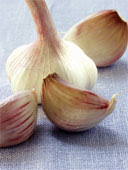
Ninkasi, you are like the one who pours out the filtered beer of the collector vat,
It is like the onrush of Tigris and Euprhates andphrates.”
—from “The -Hymn to Ninkasi”
Summertime and the livin’ is easy—barbecues, ball games and BEER. Unfortunately, beer has always been portrayed as the poor man’s drink. A beverage for the masses. Maybe that’s true, and maybe it’s not. But you know what?—beer has a royal, historical pedigree. It just ain’t joe six-pack in front of the boob tube swigging Bud and watching football. Beer is, in fact, the oldest and most widely consumed alcoholic beverage. It is older than wine. It is older than tea, or coffee. Tell that to you high fallutin’ friends the next time they sniff up their noses while drinking Cabernet.
Beer, according to the historical record, was discovered by the ancient Sumerians, and was produced, in quantity, 5,500 years ago in Iran. Sumer (or Sumeria) was an ancient kingdom laying between the Tigris and Euphrates Rivers in what is known as Mesopotamia in the Middle East. It is here that the oldest evidence of beer drinking in found, in a 4,000 year old Sumerian tablet showing people drinking beer through straws (see caption above).
But beer was more than a drink for the great unwashed. It was a “divine nectar” favored by their gods. In the ancient Epic of Gilgamesh, the earliest work of literary fiction which dates from about 2150-2000 B.C.E., the hero of the saga, Gilgamesh, meets a wild man in the forest, Enkidu, who is eventually civilized  by eating cooked food and drinking—guess what?—beer. The poem says that he “drank seven pitchers of beer, his heart grew light, and his face glowed and he sang with joy.” Sounds like a beer bash in the local pub or college dorm. And there’s more. The Sumerians had a prayer to the goddess Ninkasi. The prayer, found in 3,900 year old tablets, and known as “The hymn to Ninkasi,” serves both as a prayer and a method of remembering a recipe for beer (and this in a culture with few literate folk). Ponder that one the next time you chug Coors Light.
by eating cooked food and drinking—guess what?—beer. The poem says that he “drank seven pitchers of beer, his heart grew light, and his face glowed and he sang with joy.” Sounds like a beer bash in the local pub or college dorm. And there’s more. The Sumerians had a prayer to the goddess Ninkasi. The prayer, found in 3,900 year old tablets, and known as “The hymn to Ninkasi,” serves both as a prayer and a method of remembering a recipe for beer (and this in a culture with few literate folk). Ponder that one the next time you chug Coors Light.
It could be said that beer was instrumental in our evolution from a primitive to a more advanced society. The Code of Hammurabi (Codex Hammurabi), one of the first set of ancient written laws (from Babylon c. 1790 B.C.E.), included ordinances regulating beer and beer parlors (read that, bars). There is even a theory that beer saved the nascent religion that gave rise to our Judeo-Christian tradition. It puts forth that the manna that God had sent from heaven to save the wondering Israelites after they left Egypt was a bread-based porridge-like beer called wusa. Next time you go for services to the church or synagogue, hit the congregation with that one.
Beer was vital to all ancient grain growing societies. It was the main beverage in ancient Egypt where it was made from barley. The Africans made it from millet, the Chinese used wheat, and the Japanese used rice. It was brewed by the ancient Greeks and Romans, who called it cerevisia, from the Celtic word for it. That’s very similar to the Spanish word for beer, cerveza. It was a common drink during the Middle Ages and popular in the northern and eastern parts of Europe, where it gave rise to another popular legend, that of Gambrinus (1371-1419). Also known as John the Fearless, he is believed to be the inventor of hopped malt beer and the unofficial patron saint of beer. Whether this is true or not, is open to debate. We do know that though beer was made from various grains it wasn’t until the 9th century that hops (flower cones from the hop plant) were added for flavoring and also as a preservative. The method was perfected by the Germans in the 13th century which made for longer lasting beer that could be exported.
Today beer is consumed worldwide, with all kinds of brews, from high end to low end. So, the next time you open up that six-pack, remember that you, too, are partaking of a beverage of the gods.
Included is a recipe, Cabro Boraccho (Drunken Goat), from my first cookbook, Puerto Rican Cusine in America (Avalon Books). The recipe calls for a light lager beer. Dark ales are not recommended. Save that for savoring in the glass. Goat meat can be found in Caribbean or Middle Eastern markets, or you can order it from your local butcher.
CABRO BORRACHO (DRUNKEN GOAT)
3 pounds goat meat, trimmed and cut into 1-inch chunks1/2 cup white vinegar 1/2 cup white vinegar or lemon juice
Salt and ground black pepper to taste
3 cloves garlic, peeled and minced
1 tablespoon dried oregano
1/2 cup olive oil
1 8-ounce can tomato sauce
1 medium onion, peeled and chopped
6 fresh cilantro leaves, chopped
2 bay leaves
2 12-ounce can lager beer
4 medium potatoes, peeled and quartered
6 carrots, peeled and quartered
1. Rinse meat under cold running water and pat dry with paper towels.
2. Sprinkle meat chunks with vinegar or lemon juice. Cover and refrigerate for at least four hours or, better still, overnight.
3. Drain, rinse again in cold water and pat dry with paper towels.
4. Season with salt, pepper, garlic and oregano.
5. Heat oil in a heavy kettle or Dutch oven. Add goat meat and brown evenly on moderate heat (about 4 minutes).
6. Add tomato sauce, onion, cilantro, bay leaves and beer. Stir to combine.
7. Bring to a boil, cover and simmer on low heat for 1 hour or until fork tender.
8. Add potatoes and carrots. Cook another 30 minutes. If the sauce is not thick enough, uncover and cook until sauce thickens. Serve over rice or on its own with crusty bread.
Yield: 4 or more servings.
![Reblog this post [with Zemanta]](https://img.zemanta.com/reblog_e.png?x-id=bb8e4449-be8f-42e0-b965-32955c1ebf08)


![Reblog this post [with Zemanta]](https://img.zemanta.com/reblog_e.png?x-id=67921d78-1f2c-4ec6-ba6e-207168511114)

![Reblog this post [with Zemanta]](https://img.zemanta.com/reblog_e.png?x-id=96c62d3c-7f02-432d-be1a-33ebc16ec82c)

![Reblog this post [with Zemanta]](https://img.zemanta.com/reblog_e.png?x-id=68d65b6e-2045-4aef-bdc1-fc856f605b87)




